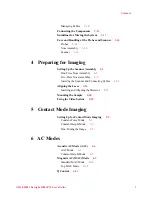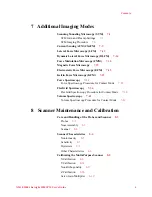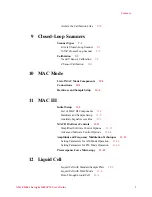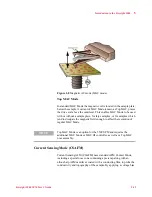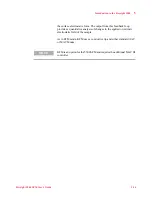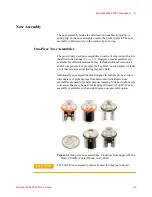
Introduction to the Keysight 5500
5
Keysight 5500 SPM User’s Guide
5-10
components.The complex tip-sample forces cause changes in the
amplitude, phase and resonance frequency of the oscillating cantilever.
Thus, topography, amplitude and phase can be collected simultaneously.
The phase and amplitude images may highlight physical properties that
are not readily discernible in the topographic map. For example, fine
morphological features are, in general, better distinguished in amplitude
and phase images.
The force of the oscillating tip is directed almost entirely in the Z axis;
thus, very little lateral force is developed and tip/sample degradation is
minimized. This benefit also makes it possible to obtain clear images of
soft samples.
A feedback system is employed to maintain the oscillation amplitude at
a setpoint value. The difference between the amplitude and set point,
called the “error signal,” is used as the input to the feedback system. The
output of the feedback loop is amplified and drives the Z-actuator. The
map of this output signal is called the “Amplitude Image,” which is
typically plotted side-by-side with the topography image. The
topography image is the voltage applied to the piezo required to keep
the oscillation amplitude constant, multiplied by the sensitivity of the
piezo in nanometers/volt.
AC Mode can operate in either the intermittent contact (net repulsive)
regime or the non-contact (net attractive) regime. During intermittent
contact, the tip is brought close to the sample so that it lightly contacts
the surface at the bottom of its travel, causing the oscillation amplitude
to drop.
The tip is usually driven by a sinusoidal force, with the drive frequency
typically at or near one of the cantilever’s resonance frequencies
(eigenfrequencies), and most often at the fundamental frequency.
Absent any tip-sample interactions, the cantilever oscillations are also
sinusoidal if the drive amplitude is small enough to keep the cantilever
motion small compared with the cantilever thickness.
Two methods are used to drive the cantilever oscillation: by indirect,
acoustic vibration (Acoustic Mode), or by direct vibration in a magnetic
field (MAC Mode).
Acoustic AC (AAC) AFM
In Acoustic AC (AAC) Mode AFM, shown schematically in
on page 11, a piezoelectric transducer (1) shakes the cantilever holder
(2) at or near its resonant frequency, typically 100 to 400 kHz.
Interaction between the probe (3) and the sample reduces the oscillation

